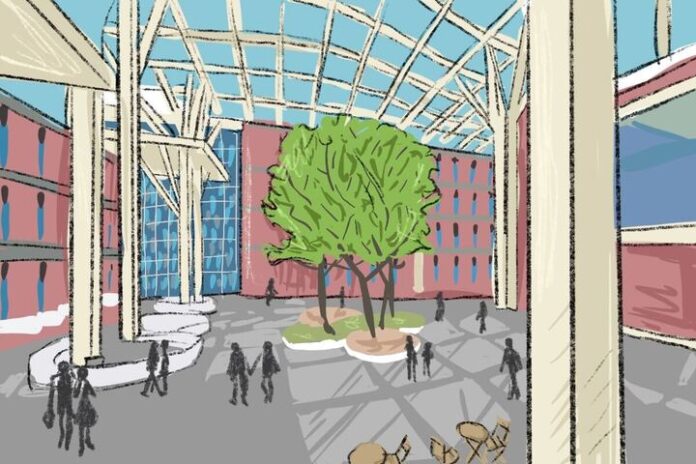
Carleton University’s Campus Master Plan Update (CMP) outlines long-term initiatives designed to transform campus.
The plan focuses on five “big moves,” which are initiatives aiming to improve the overall student and campus experience.
These include improved natural landscapes, pedestrian pathways, flexible street design, expanded tunnel systems and building developments.
“The 2023 CMP reflects feedback from more than 1,000 faculty, staff and students,” wrote Steven Reid, Carleton University’s spokesperson, in an email. The plan is reviewed every five years and is approved by the Board of Governors.
Amani Hamzeh, a former architectural studies and urbanism student at Carleton, said she thinks Carleton has one of the best designed campuses from an urban design perspective.
“There’s definitely the space to develop more on campus,” Hamzeh said. “They should try to use up all the space they have.”
The plan outlines 28 potential new buildings across campus and one planned building, Rideau House, set to open fall 2025.
These new buildings include an enclosed glass-ceiling atrium in the Mackenzie Building, a mixed-use transit hub, parking lots and new residence buildings.
The plan aims to develop new buildings and greenspace in every corner of Carleton’s campus, including the surrounding area by Athletics and Alumni Hall.
“I feel like them expanding and going up to Alumni Hall is great, especially if they’re doing more educational buildings,” Hamzeh said.
The plan also proposes a four-kilometre Green Ribbon trail weaving around the borders of campus to improve recreational opportunity, strengthen landscape integration and create social spaces.
“It’s clear Carleton is promoting a healthy lifestyle where students can go for a walk in nature during exam season or sit in the quad during the summer,” said Hamzeh. “But for the winter, they need to balance between indoor and outdoor spaces.”
Carleton has constructed several new buildings over the last couple of years, including the Nicol Building, Lennox and Addington House, the Health Science Building and the ARISE Building.
“We are so limited with where to go to study or gather,” said Hana Abdelwahab, a third-year architectural studies and design student.
“Whether you’re in a group or on your own, I feel like we need more spaces for students to just be,” Abdelwahab said.
Also outlined is a transportation framework to address congestion and road network inefficiencies.
“I like that on Carleton’s campus, you feel like you’re in a smaller city,” Hamzeh said. “But the road systems are complicated, and they keep changing and developing, making it hard for everyone to navigate.”
The university is looking to convert Campus Avenue into a flexible street to allow cyclists, pedestrians and vehicles alike to share the space, limiting buses in the area.
Library Road would be converted to a pedestrian priority street, restricting general vehicle traffic.
The plan is also proposing tunnel improvements and expansions to “humanize” the tunnel system.
These include incorporating brighter colours and materials to the tunnel system, introducing natural light through skylights and widening the tunnel pathways.
Master plan enhancements to outdoor spaces and buildings will occur in multiple phases over several years with no confirmed timeline.
“This is going to be a hefty project, especially when they’re taking a whole parking lot and redeveloping it,” Hamzeh said. “I’m very excited to see where this goes.”
Featured graphic by Alisha Velji.





